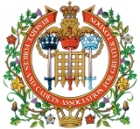Like the Reserve Forces of today, foreign deployment was often on the cards, as was procurement. On the eve of Agincourt, more than 3 million arrows were made in London and shipped to France along with men from London.
In spite of the City of London's lack of enthusiasm for King Henry V's expeditions and subsequent adventures, the City militia has always been well represented in warring abroad and peace-keeping at home. As military science and organisation evolved, so, too did the numerous volunteer forces. Indeed, the oldest Regiment, as such, in the British Army (1537) is a London-based volunteer unit: the Honourable Artillery Company.
Spurred by the threat of French invasion (a mood which lasted throughout the Georgian and Victorian eras) and caught up with the scientific advances of the age, a wide range of combat arms and combat arms support units flourished, each adapting readily to the sensible Panmure and Cardwell reforms. Again, overseas service called, not just in Egypt in 1882, but in South Africa in 1900 when the phenomenal creation of the City Imperial Volunteers, a thousand man Battalion made up of existing volunteers were deployed to good effect, within five weeks of their creation in December 1899.
By 1907 there were 221 Battalions of volunteer infantry alone and with the coming of the Haldane Reforms in 1908, one unit, The London Regiment, had 26 Battalions! Then as now, security of the homeland, international trade and prosperity of the nation largely relied upon reserve and territorial forces.
Reserve naval, marine and air units came to be formed after the Great War and by the end of the Second World War thousands of London men and women reservists had given service and many had lost their lives in the service of the Crown and their city. Many continue to do so. Those who live in freedom owe those who have fallen in battle a debt which can never be repaid.
Supporting London's reservists and Territorials, the 108 (2008) Livery Companies and Guilds of the City collectively represent the largest philanthropic organisation in Europe. All are proud of their active links with regular, reserve and cadet units of all three services. In 2008, some 178 units of the armed forces and an increasing number of Naval, Army and Air Cadet units are supported by the Livery of London.
This support is not just about money, but includes a variety of imaginative involvements going well beyond awards, visits, prizes and invitations to livery functions. Many a Master of a Livery Company has found himself in a trench or at the controls of a multi-million pound aircraft (not in the air!). Others have maintained personal contact with units in the front line, using the opportunities provided by electronic communications. The Livery were the founders of corporate social responsibility and today more and more freemen and liverymen are acting as mentors, coaches and role models for cadets and younger reservists beginning their civilian careers.
The listings which follow give an indication of the scope of the livery affiliations. These lists continue to expand as new livery companies emerge and new units are formed. The recent mayoral initiative of sponsoring cadet units is an exciting one and is rapidly expanding.
Alderman David Lewis The Rt Hon The Lord Mayor of London
